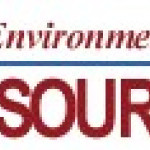- 行业: Government
- Number of terms: 3992
- Number of blossaries: 2
- Company Profile:
A numerical index formerly used for reporting severity of air pollution levels to the general public. The PSI incorporated the five criteria pollutants -- ozone, PM10, carbon monoxide, sulfur dioxide, and nitrogen dioxide -- into one single index. The PSI was based on the 1-hour ozone standard. PSI levels ranged from 0 (Good air quality) to 500 (Hazardous air quality). The higher the index, the higher the level of pollutants and the greater likelihood of health effects. For more information, see our website regarding the Air Quality Index.
Industry:Pollution control
A nonprofit organization that provides a forum for producers, consumers, and representatives of government and industry, to write laboratory test standards for materials, products, systems, and services. ASTM publishes standard test methods, specifications, practices, guides, classifications, and terminology. For more information, please visit the ASTM website.
Industry:Pollution control
A motor vehicle pollution control device designed to reduce emissions such as oxides of nitrogen, hydrocarbons, and carbon monoxide. Catalytic converters have been required equipment on all new motor vehicles sold in California since 1979.
Industry:Pollution control
A multi-million dollar incentive grant program designed to encourage reduction of emissions from heavy-duty engines. The grants cover the additional cost of cleaner technologies for on-road, off-road, marine, locomotive and agricultural pump engines, as well as forklifts and airport ground support equipment. Please visit our Carl Moyer Program website.
Industry:Pollution control
A motor vehicle that uses an electric motor as the basis of its operation. Such vehicles emit virtually no air pollutants. (See also hybrid electric vehicle. ) For more information, please see our zero emission vehicles website.
Industry:Pollution control
A motor vehicle inspection program implemented by the California Bureau of Automotive Repair. The purpose of the I&M is to reduce emissions by assuring that cars are running properly. It is designed to identify vehicles in need of maintenance and to assure the effectiveness of their emission control systems on a biennial basis. Enacted in 1979 and strengthened in 1990. (Also known as the "Smog Check" program. ) For more information, please go to the States main smogcheck website.
Industry:Pollution control
A model rule developed by air quality managers for local air districts to use to control the emissions from certain stationary sources of air pollution.
Industry:Pollution control
A location where emissions from specific sources may expose individuals and population groups to elevated risks of adverse health effects -- including but not limited to cancer -- and contribute to the cumulative health risks of emissions from other sources in the area. For more information, please go to our toxics hot spots website.
Industry:Pollution control
A mineral fiber that can pollute air or water and cause cancer or asbestosis when inhaled. The U. S. EPA has banned or severely restricted its use in manufacturing and construction and the ARB has imposed limits on the amount of asbestos in serpentine rock that is used for surfacing applications. For more information, please visit our website.
Industry:Pollution control
A measurement of visibility. One deciview represents the minimal perceptible change in visibility to the human eye.
Industry:Pollution control
